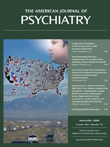Due to the nationwide shortage of child psychiatrists, clinicians without child psychiatry training often provide mental health care for children and adolescents. A text that distills the clinical “essentials” of child and adolescent psychiatry would be a great benefit to these clinicians. This was the aim of editors Mina Dulcan, M.D. and Jerry Wiener, M.D. (now deceased) in developing Essentials of Child and Adolescent Psychiatry. This highly readable and informative text is designed primarily for general psychiatrists but will be quite useful for family practitioners, pediatricians, and pediatric neurologists as well as medical students and nonphysician mental health care providers. This book is a condensed version of The American Psychiatric Publishing Textbook of Child and Adolescent Psychiatry, Third Edition, published in 2004. As Dr. Dulcan explains in the preface, it became clear that a shorter, more practical and less expensive book was needed for non-child psychiatrists.
While Essentials of Child and Adolescent Psychiatry is still a lengthy book at 819 pages, it was pared down considerably from the larger textbook. Chapters on individual and family psychotherapy have been removed. Dr. Duncan speculates that psychotherapy services will likely be provided by psychologists, social workers, and family therapists with much more psychotherapeutic training than could be provided in this focused text. Readers seeking an overview of psychotherapeutic treatments for children and adolescents are referred to the larger text.
The book begins with a nine-chapter section covering assessment and diagnosis. Tips for the clinical interviewing of children, adolescents, and parents are reviewed within a developmental context in this section, along with discussions of rating scales, structured diagnostic interviews, and laboratory testing. There is also a brief chapter on the classification of child and adolescent psychiatric disorders written by the editors. In a readable and concise format, the authors describe the development of the current psychiatric diagnostic system and the changes for children and adolescents that have taken place in the DSM since it was first published in 1952.
Individual chapters are well organized, concise, and offer current accessible information from leading experts in the field. At the end of each chapter is an extensive reference section, along with self-assessment questions. An answer guide is provided near the end of the book, with page numbers indicating where the information can be found. There is also the potential for receiving continuing medical education credits for completing the self-assessment questions.
A brief but compassionate chapter by Hector R. Bird, M.D., on presenting treatment recommendations highlights the therapeutic alliance and parental anxiety associated with a child’s psychiatric evaluation. This postassessment or “informing” session allows the clinician to explain the results of the evaluation and to provide treatment recommendations. Parents may anticipate this as a “day of reckoning” in which they will be found guilty of bad parenting, and they may view the clinician as an adversary. The clinician’s first task is to provide reassurance and support, with specific behavioral problems de-emphasized and an emphasis being placed on understanding how the child perceives the world.
The chapter on psychopharmacology, written by Joseph Biederman, M.D., Thomas Spencer, M.D., and Timothy Wilens, M.D., provides the reader with current information within an ever-changing field. The authors have an extensive history in child and adolescent psychopharmacology research, especially in the treatment of attention-deficit/hyperactivity disorder and comorbid disorders. This chapter gives an up-to-date review of stimulants, with an emphasis on newer, long-acting preparations. More difficult and controversial topics are covered as well. The use of stimulants and potential worsening of tics is discussed, with earlier studies being contrasted with more recent studies showing no evidence of worsening tics with stimulant use
(1) . Substance abuse among adolescents treated with stimulants is also reviewed. Studies by the authors
(2) are cited showing stimulant use decreasing the risk of substance abuse disorders among youth with attention-deficit/hyperactivity disorder. Concerns about stimulant-associated growth delays are reviewed, along with recent studies showing less need for “drug holidays” and helping to reassure parents about potential risks.
The psychopharmacology chapter also includes a considerable discussion of the recent Food and Drug Administration decision to require manufacturers of antidepressants to include “black box” warnings. The warnings alert prescribing physicians of an increased risk of suicide among children and adolescents treated with these agents. The Food and Drug Administration statement
(3) is included, along with a statement by the APA emphasizing that antidepressants can save lives and that the biggest threat to a depressed child’s well-being is not receiving care at all
(4) .
The chapter on suicide and suicidality by Cynthia R. Pfeffer, M.D., is noteworthy. The description of etiological risk factors is thorough, and the inclusion of odds ratio data is helpful in clarifying the relative weight of individual risk factors. A discussion of increased suicidality and depression resulting from life stress interacting with the serotonin transporter gene
(5) is included. This allows the reader to feel more current with recent developments in the field of behavioral genetics. However, more focus on the assessment and interventions for suicidal youth would have been helpful for the nonpsychiatric practitioner.
Reading Essentials of Child and Adolescent Psychiatry will not allow clinicians to bypass a psychiatric residency and fellowship in child psychiatry. However, this book succeeds as an excellent resource for practicing physicians, trainees, and mental health practitioners wishing to become more comfortable and knowledgeable in providing evidence-based mental health care to children and adolescents.

